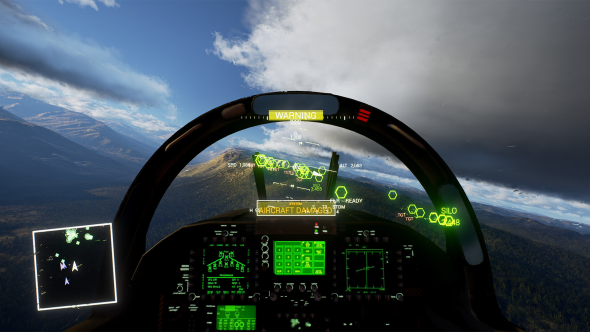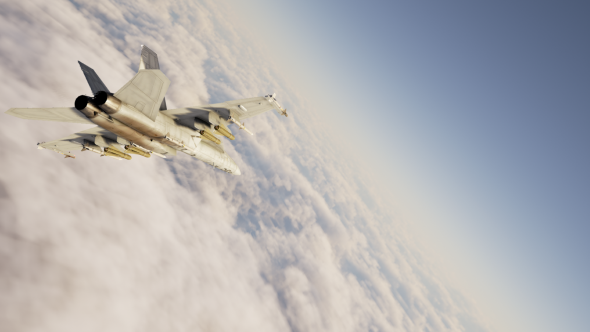Who would volunteer to make a flight simulator? They are an impossible ask: incredibly detailed yet enormously vast. It is a problem that only gets more difficult as production values increase in line with new hardware, pushing expectations for graphical fidelity to new heights. Yet developer Abi Rahmani has thrown himself into Project Wingman, a flight game that aims to make accessible but still authentic pilotry a reality in Unreal Engine 4.
Related: the best simulation games on PC.
Inside the cockpit

While flight games enable us to see the world from above – or, at least, a decent approximation of it – they also largely take place in a single environment: the cockpit.
“I definitely look at references from different games, video footage of cockpits, and what it feels like to fly when I’m travelling myself,” Rahmani tells us. “Of course, it’s not the real jet, but it should somewhat deliver the same feeling.”
That feeling, specifically, is the sense of complex and exciting machinery laid out in front of you. Wingman’s cockpit will not be fully interactive, but it will present you with a huge array of buttons and neon-green screens that evoke a chocolate box of cutting-edge technology.
“Unreal Engine’s lighting system definitely helps that,” Rahmani says.
The equipment is not all for show – some of it relays crucial information to you during flight, pulling background numbers from the engine and presenting them as they would be inside a real plane. “The main thing reflecting back to the player is altitude and speed,” Rahmani explains, “which mostly the engine already provides.”

It is one thing to be told that you are travelling very fast, though, and quite another to feel it. Measurements alone cannot convey a sense of speed, especially when adrift from the points of reference you might have on the ground. In this regard, Project Wingman’s best trick is the rain that runs across the cockpit windows during storms – actually a water-on-canopy effect enabled by Unreal Engine 4’s refraction shaders.
“It’s not necessarily realistic, but it does provide that spectacle that makes you convinced you’re in a rainy area,” Rahmani says. “It’s a lot of masks and texture work, really, and panning materials.”
Elsewhere, Rahmani has taken a real-world effect and given it an exaggerated game design function.
“One thing I’ve recently added is a deep rumbling sound when you’re close to the ground, just to let you know,” he says. “It’s more emphasised, so it’s not as quiet as it would be in real-life. It’s a subtle effect, but it can give you the sense you’re about to crash, especially if you’re visually blocked by rain or clouds.”
A little landscaping

Before tackling the great landscape below the plane, Rahmani watched a DICE talk in which a designer explained how the studio went about building maps for the Battlefield games. That approach has been expanded to a much larger area of geography for Project Wingman.
“I used World Machine and essentially scaled it up to what we needed,” he says.
World Machine is a powerful tool for creating 3D terrain with realistic geological effects. Handily enough, it provides height maps that can be input directly into Unreal Engine 4.
“Basically, we use World Machine to add erosion data, rivers, and shape the landscape the way we want it,” Rahmani explains.
Even with the heavy lifting handled by a specialised piece of software, it sounds like a hefty environment for a game to run – especially when flying overhead at speed. But, thankfully, the engine also has an automatic LOD generation system, which works to dramatically reduce the polygon count of objects in the world with a minimum of visual impact.
“That makes it really easy for us to do large landscapes without performance drawbacks,” Rahmani says. “I’ve never necessarily seen very detailed trees in flight simulators, and that’s one thing I’ve added, to just make the landscape look more convincing when you fly across forests and mountainous areas.”
Rahmani has outsourced music to a composer in London, and has the support of a handful of volunteers in sourcing and recording voices for the game. But for the most part he is flying solo, which makes this marriage of granular detail and sweeping topography all the more remarkable.
You can follow the development of Project Wingmanon itch.io. Unreal Engine 4 is now free.
In this sponsored series, we’re looking at how game developers are taking advantage of Unreal Engine 4 to create a new generation of PC games. With thanks to Epic Games and Abi Rahmani.
